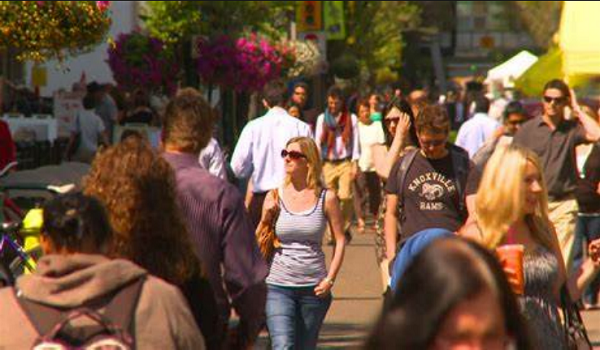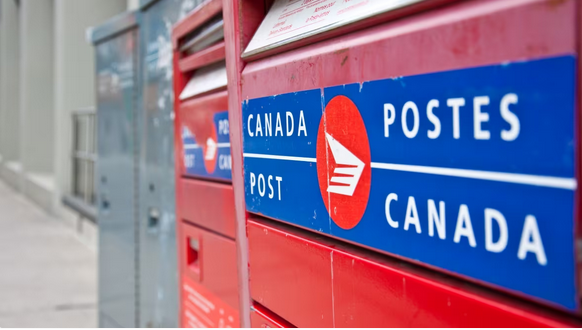Surge in Alberta’s population adds pressure on government programs and services, provincial government says
Alberta’s classrooms are crowded. Housing costs are expected to climb, propping up inflation. Economic growth will lag population growth.
The province started its most recent fiscal update with good news: It expects a surplus of $2.9-billion this year, more than eight times larger than it originally predicted. Then came the bad: “The rapid and unexpected growth in population has added pressures on government programs and services,” the government said.
This clinical description, contained in the opening paragraph of Alberta’s first-quarter update, delivered at the end of August, masks the magnitude of growth. Alberta figures its population will soon hit 4,913,000, up 4.6 per cent in 2024, the largest spike in more than a century, according to provincial data stretching to 1921.
Alberta, when it released its 2024-2025 budget in February, predicted its population would grow by 3.7 per cent in the year, on top of the 4.1-per-cent expansion in 2023.
The burst of newcomers means that Premier Danielle Smith and the governing United Conservative Party must navigate a fresh tangle of political, social and financial challenges. The crush of new people will deliver Alberta a short-term windfall in the form of more personal income tax revenue, but the population surge will likely force the province to allocate more money to big-ticket items such as new schools and increase spending in areas like health.
For Ms. Smith, Alberta’s ballooning population is a political minefield. She has said that she wants 10 million people in Alberta by 2050, which she argues would boost the economy and give the province more clout when it comes to dealing with Ottawa.
But this target frustrates Albertans who believe that the government is already failing to provide adequate services. It also agitates a faction of her supporters who question whether Alberta can afford to accommodate newcomers, who they believe use even more government resources.
Ms. Smith, who faces a leadership review in November, told Ottawa on Thursday that “asylum claimants” are no longer welcome in Alberta, noting that the province is “supporting” a disproportionate share of people from Ukraine who fled to Canada to escape the war with Russia.
Trevor Tombe, the director of fiscal and economic policy at the University of Calgary’s School of Public Policy, said Alberta has the financial firepower to manage the population boom – if it takes action soon.
“There’s going to be some capital pressures, and if they can’t stay ahead of it, it is going to create all sorts of shortages in critical public services,” he said.
The economist said Alberta could pursue urgent capital projects such as new schools without eliminating the projected surplus. The province’s ability to borrow is unmatched in Canada, although its appetite for debt is anemic. But while a notable segment of Albertans despise government debt, the record-breaking population growth makes doing nothing risky, too.
“The scale of this is hard to overstate,” Prof. Tombe said. “It will almost surely be impossible for the government to accommodate through what it is currently planning for the capital spend.”
Mr. Tombe said new schools will likely be pursued before hospitals because, in the short term, demand for educational facilities is greater given young families are a key part of the population boom.
Ms. Smith, on Wednesday, indicated that she will outline her government’s plan to deal with overflowing schools in a television address Sept. 17.
On Thursday, she blamed some of Alberta’s woes on immigration and demanded that Ottawa stop sending Alberta refugees, “especially without any financial assistance.” Ms. Smith noted that Alberta represents 11.8 per cent of the Canadian population, while taking in 22 per cent of Ukrainian evacuees in Canada.
“Excessive levels of immigration to this province is increasing the cost of living and strains public services for everyone,” Ms. Smith said in a statement on social media. Alberta, she said, is “not open to having these additional asylum seekers” settle in the province.
“We simply cannot afford it.”
In a March letter, Ms. Smith asked Ottawa to allow 10,000 Ukrainian evacuees to come to Alberta. She further requested that the federal government double the number of foreign nationals that Alberta can nominate for permanent residency under the provincial nominee program. Citing a critical labour shortage, she asked for 20,000 spots annually for 2024, 2025, and 2026, up from the 9,750 spots that Ottawa allotted Alberta for 2024.
Regardless of the outcome of Ms. Smith’s latest clash with the federal government, Alberta is preparing to spend more to deal with stress on its programs and services. Nate Horner, the Finance Minister, hinted in the fiscal update in August that the government is prepared to draw on the remaining $1.4-billion in the budget’s contingency fund.
When asked whether the contingency fund, which is a financial cushion that the UCP uses for disasters such as forest fires, would be directed toward Jasper as the town deals with the financial fallout from this summer’s blaze, Mr. Horner pointed to financial strain in three departments: education, health, and seniors, community and social services (SCSS).
“There are a lot of pressures that we see. We invested in education here in first quarter, we know there are problems in health and SCSS that will probably be dealt with in second quarter,” he told reporters. “So we’re trying to keep our powder dry in the contingency to deal with the challenges throughout the year.”
Spokespeople for Ms. Smith and Mr. Horner did not return messages seeking comment.
This article was first reported by The Globe and Mail













